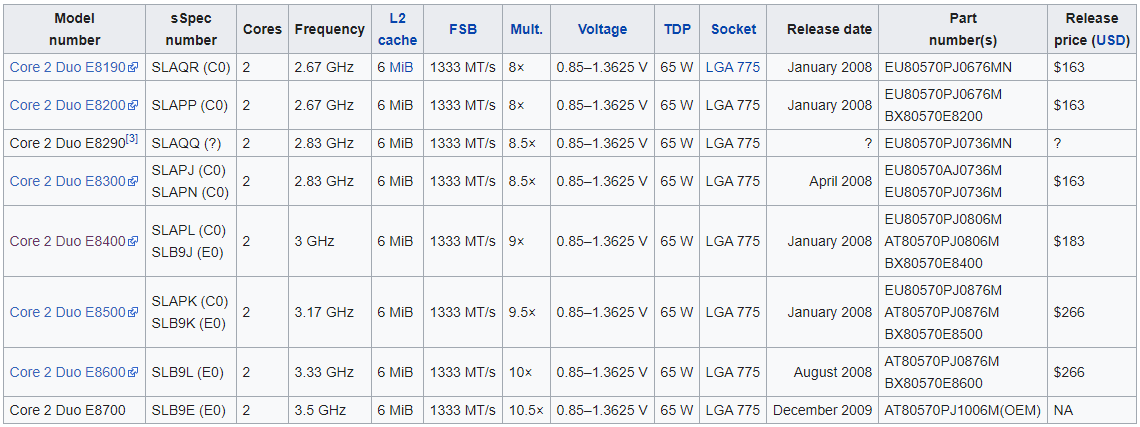

The Core i3 is faster even in single-threaded applications, but the performance gap really widens in multi-threaded applications. You might therefor expect that the Core 2 Duo would have the edge - particularly when you consider that the Core 2 Duo costs almost three times as much if you buy it individually - but in fact the Core i3 is faster, and often by no small margin. The fastest Core 2 Duo desktop processor has a speed of 3.33Ghz, while the fastest Core i3 desktop processor is clocked at 3.06Ghz. The Core 2 Duo processors, however, don’t have the same differentiation between versions of the same architecture. The Core i3 is the slowest variant of the Nehalem based processor. However, because the Core i3 is the low-end Nehalem variant, most of these features are disabled or not relevant - the Core i3 is a dual core processor and Turbo Boost is disabled, but hyper-threading is enabled. Nehalem is better constructed for quad-core processors, has hyper-threading available, and can use a feature called Turbo Boost which maximizes processor speed. The Nehalem architecture has numerous advantages over the Core 2 architecture. The Core i3 is based off a new architecture called Nehalem.

The Core and Core 2 architectures were arguably Intel’s most successful architectures, as they replaced the Pentium 4 processors in desktop systems and made Intel competitive in that space once again. The Core 2 Duo processors are based off the Core 2 architecture. However, the processors are based on different architectures. Both are dual-core processors and most Core 2 Duos and Core i3 have similar clock speeds. It is very similar to the Core 2 Duo in many ways. However, there is a newcomer which is challenging the Core 2 Duo. Core 2 Duo processors have also been the go-to for many less expensive desktop systems, with speeds reaching over 3Ghz.

Over those three years the average speeds of Core 2 Duo processors have advanced significantly, and many of today’s Core 2 Duo laptops have speeds of around 2.2Ghz or faster. The Core 2 Duo has been the processor of choice in laptops for about three years.


 0 kommentar(er)
0 kommentar(er)
